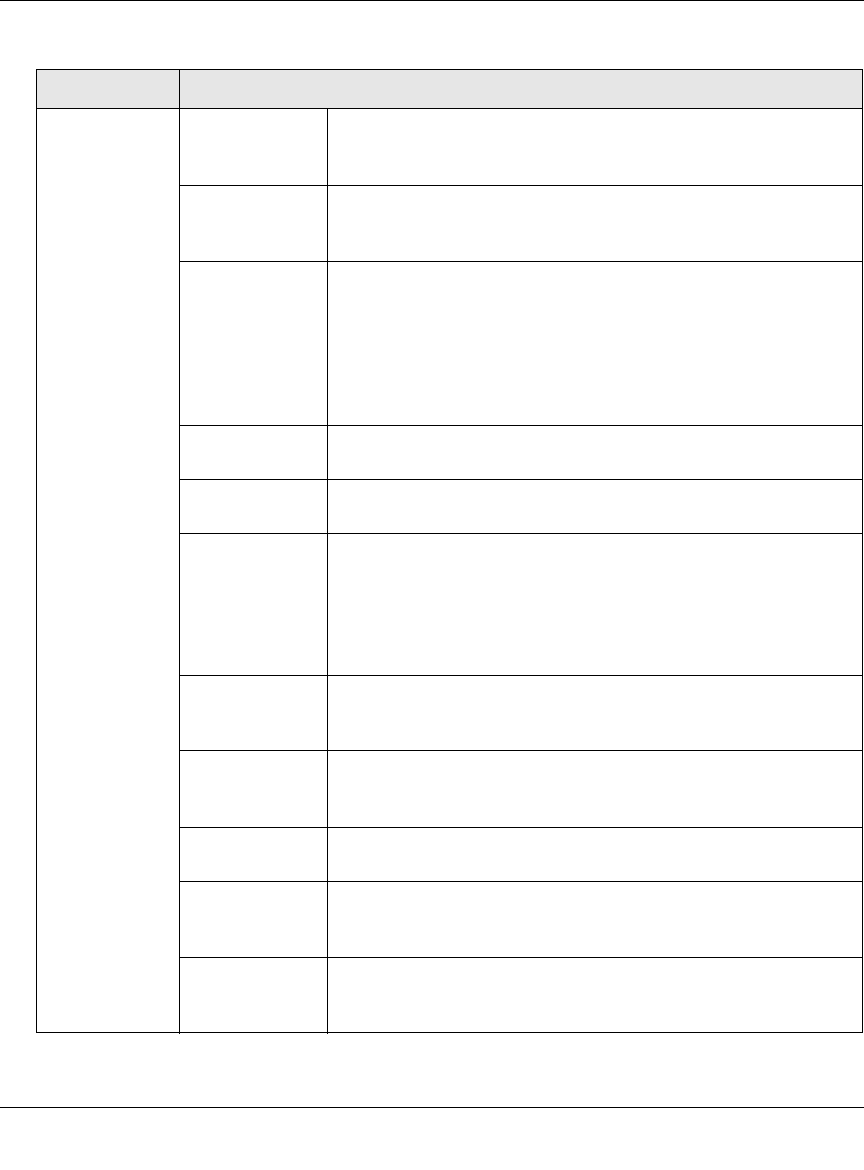User's Manual
Table Of Contents
- ProSecure Web/Email Security Threat Management (STM) Appliance Reference Manual
- Contents
- About This Manual
- Chapter 1 Introduction
- Chapter 2 Using the Setup Wizard to Provision the STM in Your Network
- Choosing a Deployment Scenario
- Understanding the Steps for Initial Connection
- Logging In to the STM
- Using the Setup Wizard to Perform the Initial Configuration
- Setup Wizard Step 1 of 10: Introduction
- Setup Wizard Step 2 of 11: Networking Settings
- Setup Wizard Step 3 of 11: Time Zone
- Setup Wizard Step 4 of 11: Email Security
- Setup Wizard Step 5 of 11: Web Security
- Setup Wizard Step 6 of 11: Email Notification Server Settings
- Setup Wizard Step 7 of 11: Update Settings
- Setup Wizard Step 8 of 11: HTTP Proxy Settings
- Setup Wizard Step 9 of 11: Web Categories
- Setup Wizard Step 10 of 11: Configuration Summary
- Setup Wizard Step 11 of 11: Restarting the System
- Verifying Proper Installation
- Registering the STM with NETGEAR
- What to Do Next
- Chapter 3 Performing Network and System Management
- Configuring Network Settings
- Configuring Session Limits and Timeouts
- Configuring the HTTP Proxy Settings
- About Users with Administrative and Guest Privileges
- Configuring Remote Management Access
- Using an SNMP Manager
- Managing the Configuration File
- Updating the Software
- Configuring Date and Time Service
- Managing Digital Certificates
- Managing the Quarantine Settings
- Performance Management
- Chapter 4 Content Filtering and Optimizing Scans
- About Content Filtering and Scans
- Configuring E-mail Protection
- Configuring Web and Services Protection
- Configuring Application Control
- Setting Scanning Exclusions and Web Access Exceptions
- Chapter 5 Managing Users, Groups, and Authentication
- About Users, Groups, and Domains
- Configuring Groups
- Configuring User Accounts
- Configuring Authentication
- Global User Settings
- Viewing and Logging Out Active Users
- Chapter 6 Monitoring System Access and Performance
- Chapter 7 Troubleshooting and Using Online Support
- Appendix A Default Settings and Technical Specifications
- Appendix B Related Documents
- Index

ProSecure Web/Email Security Threat Management (STM) Appliance Reference Manual
6-26 Monitoring System Access and Performance
v1.0, September 2009
Search Criteria
(continued)
Client IP The client IP address that is queried.
This field is available for the following logs:
Traffic, Virus, Spyware, Spam, Content filters, and Application.
Server IP The server IP address that is queried.
This field is available for the following logs:
Traffic, Virus , Spyware, Content filters, and Application.
Reason Select one or more checkboxes to specify the reasons that are
queried:
The following reasons can be selected:
• For the Email filters log: keyword, file type, file name, password,
and size limit.
• For the Content filters log: Web category, file type, blacklist, and
size limit.
Virus Name The name of the virus that is queried.
This field is available only for the Virus log.
Spyware Name The name of the spyware that is queried.
This field is available only for the Spyware log.
Action Select one or more checkboxes to specify the malware treatment
actions that are queried.
The following actions can be selected:
• For the Virus and Spyware logs: delete, quarantine, quarantine
email, block email, or log.
• For the Spam log: block, tag, or quarantine.
Detected By Select one or both checkboxes to specify the method by which
spam is detected: Blacklist or Distributed Spam Analysis.
This field is available only for the Spam log.
Subject The e-mail subject that is queried:
This field is available for the following logs:
Spam and Email filters.
Sender Email The e-mail address of the sender that is queried.
This field is available only for the Traffic log.
Recipient Email The e-mail address of the recipient that is queried.
This field is available for the following logs:
Traffic, Virus, Spyware, Spam, and Email filters.
URL/Subject The URL and subject that are queried.
This field is available for the following logs:
Traffic, Virus, and Spyware.
Table 6-9. Log Query Settings (continued)
Setting Description (or Subfield and Description)










